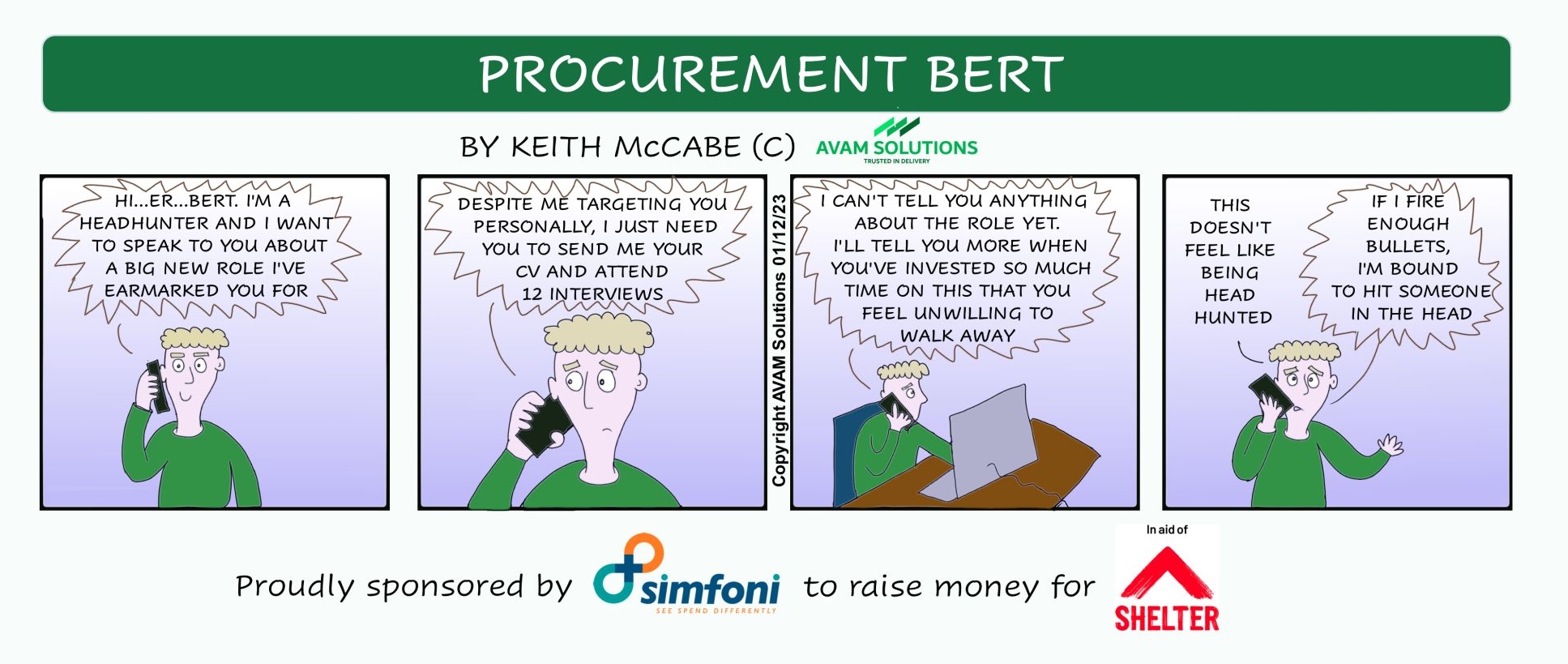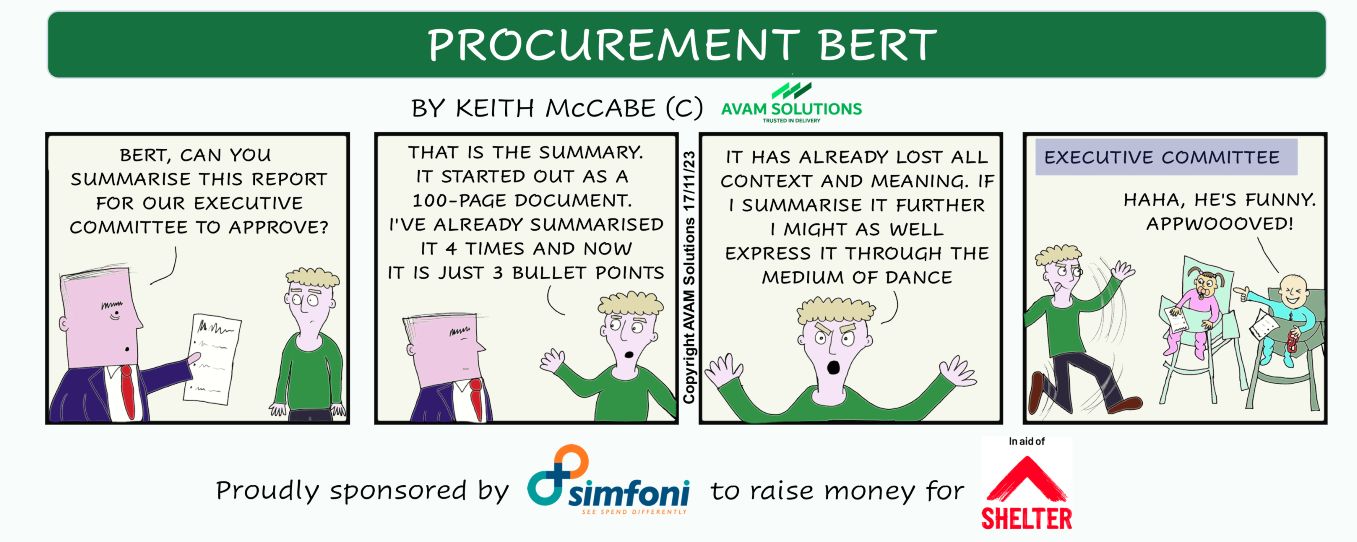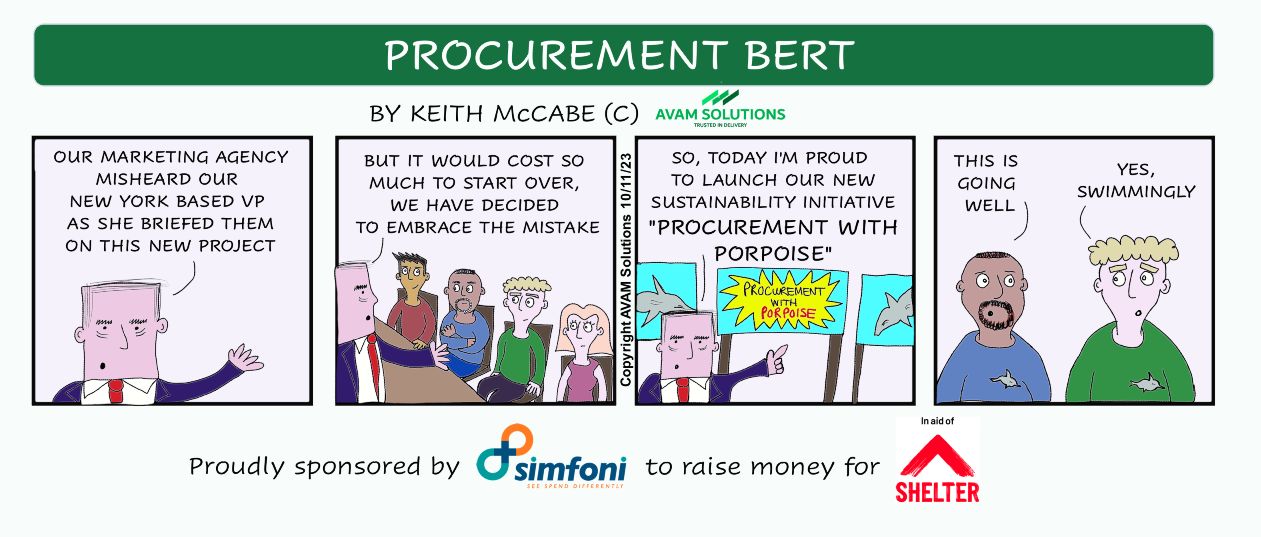Savings Management in procurement refers to activities related to forecasting procurement savings based on strategic sourcing plans, mapping savings to the budget, and tracking savings realization.
Before you begin generating funds, you should get familiarized with several theories that comprise core know-how for any procurement professional and which make up the management and reporting of savings more cost-effective. Also known as, Savings Management which is the trickiest job that businesses must deal with.
When it comes to acquiring a product, most managers and owners assume that they need everything disclosed in the list. However, most of the inventions are already present in the business and others are not valuable. This is the reason businesses often waste a lot of time and capital on products that they do not even require.
To control the capital and properly increase saving management of expenditure and acquisition process is very crucial. Nonetheless, business owners want to know that they can and are properly managing savings professionally.
Below are some of the approaches you can utilize for successful Savings Management in procurement:
Savings Management in Procurement:
1. Lower Number of deliveries.
While purchasing products from the same store a frequent error that most company owners make is they will not handle the deliveries. This is the explanation behind why they must pay extra for the deliveries as equated to the initial cost of the products. It is, therefore, better that you decrease your number of deliveries. You must evaluate all the products and their weights corresponding to the delivery costs. Following this, you can merge a few orders to ensure that they will not surpass the weight limit as well as you will be able to handle everything efficiently. This will not only allow you to cut down on shipping costs but also ensures that you can save a decent quantity of cash. From this, you will introduce a positive change as you would have learned to manage the cost of delivery correctly.
2. Pay close attention to deals and discounts.
When acquiring products online we likely don’t pay attention to any deals or discounts on offer online. It is important to note that there are various types of discounts offered and these are not only for individuals but also for businesses. Whilst purchasing products online it is essential that you consider the sales, deals, and discounts available that will permit you to save more cash. It’s also important to evaluate the rules and policies of the retailer associated with the discounts. This could also support you with saving more money than you would have anticipated. Get rebates from trustworthy suppliers.
Read More: – What is Source to Pay – A Guide to Source-to-Pay (S2P) Process
3. Evaluate your conditions.
One of the most crucial points that you must think about for Savings Management is assessing your conditions.
- When a company does not review its demands, chances are you will be wasting more money on the products that you do not even require.
- It is essential that you start off from the beginning and choose all the products that are crucial for the business. You will notice that after evaluating this, you would have eliminated a lot of products from your directory, and it could help you spare thousands of dollars.
- It is healthier that you do not just go with the flow and verify the list correctly as many times as possible. It may be a little time-consuming at the start but with the passing of time choosing the right products will become easier for you. You will only combine the items in the list that you realize are essential for the company.
4. Consider Subcontracting:
Saving money is not only associated with buying inexpensive products and buying only useful products. There are several other ways that can be applied for saving money and one of them is outsourcing essential services. You must know that there are various tasks related to the company that you must handle and for that, you will need a skilled team. Instead of wasting your time and money on training a team and reimbursing them even when you do not need their services, it is better that you outsource. You will simply have to pay for the services that you require. There is no need to teach employees or deal with other problems, and you will not have to provide the tools and technologies. This will assist you in saving in the long run.
Read More:- What is Procure to Pay – A Guide to Procure-to-Pay (P2P) Process
5. Evaluate your contracts.
Do not overlook reviewing the terms of your contracts once again. If you have been working with the same contractor for a long time, odds are that you can settle for a reduction in costs. As you have been a reliable customer for the supplier it is vital for him to slash the cost of services. You ought to select the price that would be acceptable for you and beneficial for the vendor since that is the only way he/she will concur with your terms and policy. You must make the right decision.
6. Increase productivity by introducing technology
There are various types of technological products and tools accessible in the market that you ought to introduce to the company. You are compensating your employees on an hourly basis. With the establishment of technology, your employees will have to spend less time in the workplace. As well as this, they will be able to work effectively. This, therefore, means that the cash you save from the payment of the employees can be utilized to boost their wages that will be valuable for everyone.
Bottom line:
When it comes to procurement management matters can get a little puzzling for the companies as there are many issues that they have to contemplate. There is no need to worry as there are various experts available online who can support you with Savings Management. They have the most recent tools and technology that will be used for the management of your spending method, they will support you by creating more saving opportunities to guarantee that you will save more money and waste less. It will boost the overall productivity of the company in a reduced amount of time.
Procurement Savings Management Program – Split and Dominate.
A conventional savings scheme in a large corporation needs to bring cost cutbacks in the range of tens to hundreds of millions. In smaller firms, the goals may be lower, but its accomplishment is equally challenging, considering the smaller size of their activities and lower splurge.
Accomplishing this target is not straightforward – if it were, savings could have been achieved without dedicated schemes. Several brainstorming sittings are usually necessary to generate hundreds of prospective optimization suggestions. The most encouraging of those will then be transformed into individual sub-projects, called savings initiatives or savings methods.
Each proposal needs to adhere to the good practices of project management with a:
- Devoted project team
- Indication of stakeholders and authorization path
- Clearly stated aim, including the anticipated monetary result
- Timeline
- List of actions that need to be taken
- Assessment of potential consequences
Please take note that in the case of complicated organizations, the individual projects may be grouped into streams or projects/sub-projects and what is described as a savings project may be termed a savings drive.
Confidence Ranks
This idea is best summarised with the old telling: “a bird in the hand is worth two in the bush”.
Achieving a saving is a method that starts with a concept and usually ends up with an agreement (amendment) and certification of the actual sum that was saved. Hence, when you’re still in the middle of that activity, the simple question of “how much have you recovered so far?” becomes problematic. Simply totaling up the savings, or even dividing them into “savings achieved” and “savings in progress” will be deceiving the stakeholders.
The idea of confidence levels is a mirror copy of “quality gates” well-known in product development. Put in simple terms, these are the phases that define the maturity of your saving. (An alternative way to imagine this is to relate them to a sales funnel that commences with expectations and ends up with signed-up customers)
Usually, the following confidence levels are applied:
As you move through the maturity ladder, the confidence with which you can approximate the final value of the saving rises – hence the term “confidence level”.
Using this method, you can exactly answer the question of “how much” – you submit a total sum of savings grouped by the confidence stage. This gives the shareholders a clear image of where they are in the savings activity.
Like rookie soldiers in the typical war drama, not all your contenders will make it to the finishing line. Many will be eliminated in the first stages; many more will appear as a shadow of their former self. The streak of a true master and chief of the process will be evident in the speed of delivery and the precision of the initial forecasts.
CL 1: IDEA.
Ideas in this stage are a consequence of initial brainstorming and you will want to generate a steady stream of them to attain your final targets. These are the equivalent of the sales options in CRM. Savings rates at this stage are based on “informed speculation” and are the very first rough estimations. Likely, the numbers will go way down as the program moves on. These are the suggestions needed to pass the first test of “common sense” to advance into the next stage.
CL 2: INITIAL CASE.
This is the phase where you organize the first proper viability study. This includes acquiring the current source data (existing volumes, prices), initial negotiations with experts (procurement, engineering, manufacturing, quality) to establish if (1) the idea is feasible and (2) if it has a savings capability.
It happens frequently that the person who came up with the original idea did not contemplate investment costs, internal restrictions, etc. and after careful deliberation, the case is closed at this stage.
CL 3: MARKET VERIFICATION.
The next step after the initial probability study is to get hold of market information to confirm your original assumptions. This can take the shape of:
- Market research – explore suppliers, prices/price indexes, other technologies, etc.
- RFL/ Request for Information – probing requests in case of more intricate ideas (new technologies, solutions, necessary investment, lead times, etc.) that permit the suppliers to authenticate your ideas.
- RFQ/RFP – Request for Quotes/Proposal to obtain the last validated price.
At the conclusion of this stage, you should be able to take on a go/no-go decision about executing the proposed adjustments.
CL 4: CONTRACTED/IMPLEMENTATION.
This stage usually commences with the signing of a new contract or the actual application of the changes. At this stage you typically are certain about the level of savings (either in total or per unit) but the reserves are just starting to emerge and are likely to take some time to show up in the P&L.
By this stage, the actual savings project (as in assessment, preparation, set-up) is completed and the strategic procurement team pushes on to the next challenge. Operational procurement or other departments take over the development.
CL 5: CASH-IN HAND.
The final component of the puzzle is the confirmation of the savings by the finance department. Have they happened? Did they have to be modified? The final value of savings can fluctuate with factors outside of procurement’s control – e.g., if the purchased volume of goods were smaller, the negotiated 10% on unit price would not result in a 10% decrease against the baseline spend.
Tweaking the confidence levels to your requirements:
The list above is by no way a definitive line-up and you’re clearly encouraged to expand it based on your company’s demands. I’ve seen businesses that have up to 8-9 CLs.
Why would you need more actions?
- Split steps for Engineering and Quality approval (supplier qualification, samples, PPAP/APQP) – the best of suggestions may fail at the stage of checking the real-world expertise of a supplier.
- Separate steps for Stakeholder approval – particularly where e.g., workers’ council or customers may have a right to be heard.
- Split step for Finance department checks – for businesses with flexible demand or high organizational complexity that affect the final outcomes.
Levers:
“Give me a lever and a position to stand and I will move the earth.” – Archimedes
In consulting phrasing, “levers” are the techniques or tools one can utilize to achieve savings. In principle, all savings can be accomplished by applying time and human creativity. In practice, it always helps to have a list of typical tactics as a handy memento during the brainstorming stage.
It is essential that you always detail the lever used for each individual savings plan for further analysis. You can use that expertise to improve your future estimates but, above all, you can examine for bias among your workers. The challenge is that people tend to use the levers they’re happy with – the ones they used in the past. Consequently, many potential avenues await further consideration, and you lose out on potential savings. You can make use of the “savings by lever” report to determine additional training for your employees.
There are as many categories of levers as there are consulting firms and there is no one “best” tactic. In fact, I urge you to create one that fits your company’s needs best. After all, manufacturing and service firms will focus on various levers and so will logistics, procurement, and quality departments. You may want to categorize the issues by topic or by the department that will address them. Whichever style you choose, keep the entries exclusive (avoid overlap) and as thorough as you can. Review it with your employees to see if the final list is apparent to them and they don’t have difficulties with the interpretation that would result in wrong assignments.
Savings vs. Cost Evasion
These two words lie at the heart of savings management. The difference is extremely important to realize since this is all about money: money saved, and money spent on gratuities for management (and sometimes employees) for target accomplishment.
An instance from the recent COVID pandemic can be used to describe the difference between the two theories:
Your firm has been buying protective face masks each month through a local supplier for about 20 cents apiece in 2019. In late December, your forward-thinking procurement department has agreed to pre-order new face masks in bulk from the manufacturer and wanted to drive the price down to 15 cents, which, the research indicated, would be a more appropriate price. The supplier, seeing the emerging pandemic situation, originally quoted 25 cents, but you managed to reduce the price to 18 cents by paying upfront in cash and receiving the masks in a single delivery.
Strictly talking, you have SAVED 2 cents per mask and PREVENTED THE COST INCREASE of 5 cents per mask.
Therefore, when we talk about SAVINGS, we usually consider the cases of actual reduction of the cost that has a direct influence on the company’s Profit & Loss (P&L) statement, whereas COST EVADING concerns cases where the actions of procurement professionals ensued in a clear advantage to the company, but that has no clear influence on the P&L. (It’s a bit like a positive action of firemen who managed to put down a fire just after it began: the building has not burnt down, but the company is not actually richer than it was a day before.)
It is important that you outline your savings calculation methodology BEFORE you start a savings scheme (especially one that involves consulting companies) because the worth of P&L SAVINGS achieved is usually used as a reference for calculating the payment of the management and the consulting company.
1. Avoid/Decrease Maverick Spend
Maverick spending, which is also known as tail spend, or rogue spending, can reason for up to 80% of consumptions made in business which lacks a central purchase-to-pay procurement process.
As this spend is not yet handled by procurement, it might be a fast win, provided you can direct well end-users & persuade them of the benefits.
You can look through spend accounts to find any uncontrolled spending, then allocate them to your preferred suppliers and go over your method with the end-users and your team.
2. Assess Supplier’s Terms & Discounts
Guarantee that a Master Agreement exists for all the suppliers. Debate with your suppliers as to when you may make procurement savings by changing your purchasing patterns. It may be that by purchasing marginally more products you automatically receive a greater discount.
3. Merge Suppliers & Deliveries
Make savings in delivery fees and the costs of accepting those deliveries. Managing the purchasing documentation and payment processing charges will also come down.
4. Combine Purchasing Requests & Gaps
This reduces delivery costs and purchasing documentation.
5. Review Purchasing Constraints
This guarantees that only strictly required purchases are made. It will cut down on additional costs and storage costs and is a good way to guarantee that a company makes procurement savings.
6. Buy from Agreed Catalogs
Make sure that only one brand or type of product is acquired. Duplication can be expensive and is pointless. Higher orders from one supplier lead to better discounts.
7. Look at Stock Levels
This improves in cutting down storage costs as stocks not only cost you money to pay in, but they can also worsen in time, sometimes becoming impractical.
Stock left in warehouses is “dead money”. It costs cash to store, can worsen, and become outdated.
So, before you place another order, first review your stock levels, and try to utilize what you already have.
8. Review the Requirement of Purchased Products.
Is it feasible to buy a lower spec that will do the same job? For example, it’s a well-known story that NASA created a sophisticated pen that could write in space, whereas the Russians used a 5 cents pencil – Both achieved the same job (writing in Space) but at a huge disparity in costs.
9. Review Stock Replacement Approaches
Renew items only when required and not as a routine substitute. Take care to issue in the cost of waiting for a replacement.
For example, it is needed to replace an important machinery part on a regular basis, but it is not necessary to switch most lights before they fail.
10. Make sure that Correct Management Controls are in Place
Adhere to them for ad hoc purchases. Are the correct people requesting the right products for the job? This should cut down on additional or incorrect purchasing.
11. Train & Inform Staff
Train and inform staff on cost-effective procuring and encourage them to save money whenever feasible.
12. Automate/Use Technology
While currently, we’d think that most companies have a structure in place – it is not entirely true. For example, a Head of Procurement of an energy generation company with plants in 5 countries in Asia & Africa, was still using excel for certain purchases.
While automating the purchasing process costs money to start with, by speeding up and simplifying purchasing, procurement savings should be made.
As part of using expertise to achieve procurement savings, you can connect the purchasing system to the inventory and accounting systems. This not only saves in staffing costs but also cuts down on mistakes.
Another use of technology is by putting together reverse auctions which is a very effective way to drive down procurement costs. Top-performing companies take full advantage of software to streamline their procurement processes.
13. Improve Risk Management
Supplier dependence is one of the major risks an organization could confront. One way to deal with risk is to ensure your procurement process doesn’t rely too much on one single major supplier. This includes paying close mind to contracts, following up with suppliers, and taking action to avoid logistical problems.
Part of risk management also means concentrating on cost avoidance. Procurement savings can be made by concentrating on ways to reduce the rate of cost increases or negotiating contracts with value-added services (such as prolonged warranties or free shipping).
14. Ask Your Suppliers for Reductions
Often, you can make procurement investments by changing your purchasing patterns. Discuss with your suppliers whether they would be free to offer you a higher discount if you raise your order volume slightly or if you pay earlier than the normal payment cycle of 30 to 60 days.
Or just merely ask for that discount. You’ll be amazed that just by asking for a discount quite several suppliers will be willing to adjust at the least a small discount. Not bad just for requesting!
15. Unify!
First centralize disparate purchasing functionalities, which allows for savings in staff, processes, and technology.
Second, integrating warehousing which can give great real estate and staff savings.
Good administration of the Purchasing/Procurement Department is vital to a profitable company and procurement savings can only be valuable. There are a considerable number of ways to make procurement savings and all staff and managers should be aware of them and trained in good procurement savings strategies.
Contact us today to know more about how Simfoni’s technology and processes can help your organization achieve world-class Spend Analytics , Supplier Management, Impact Assessment, Savings Tracking & Tail Spend Management Solution











